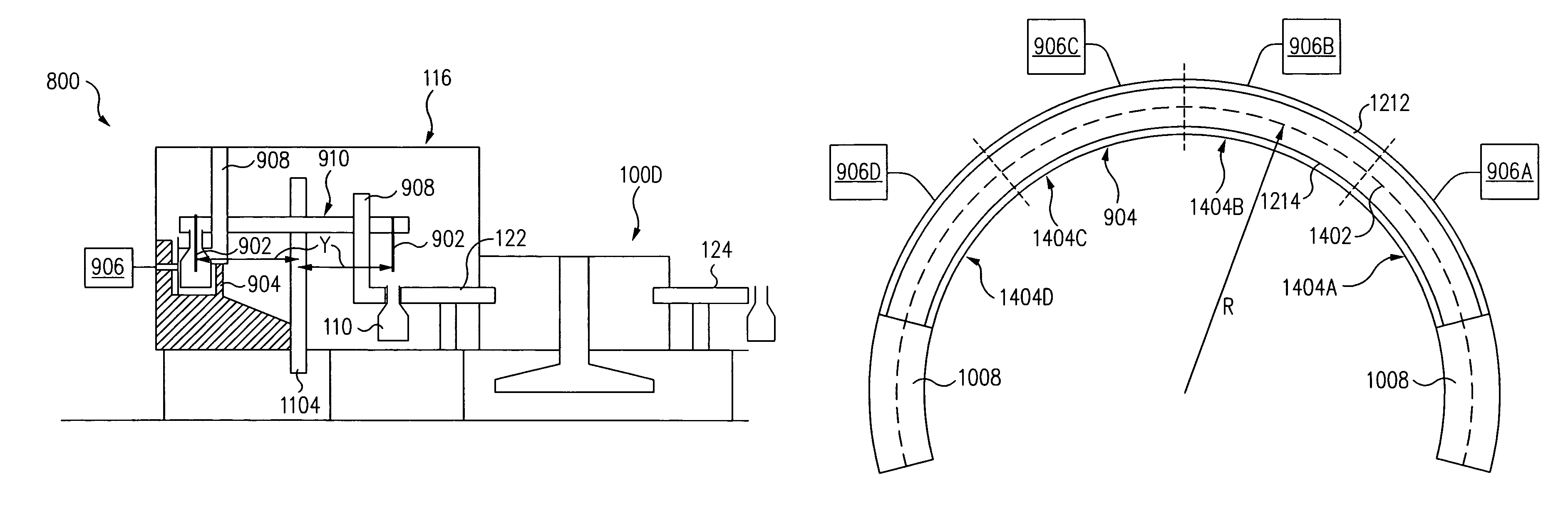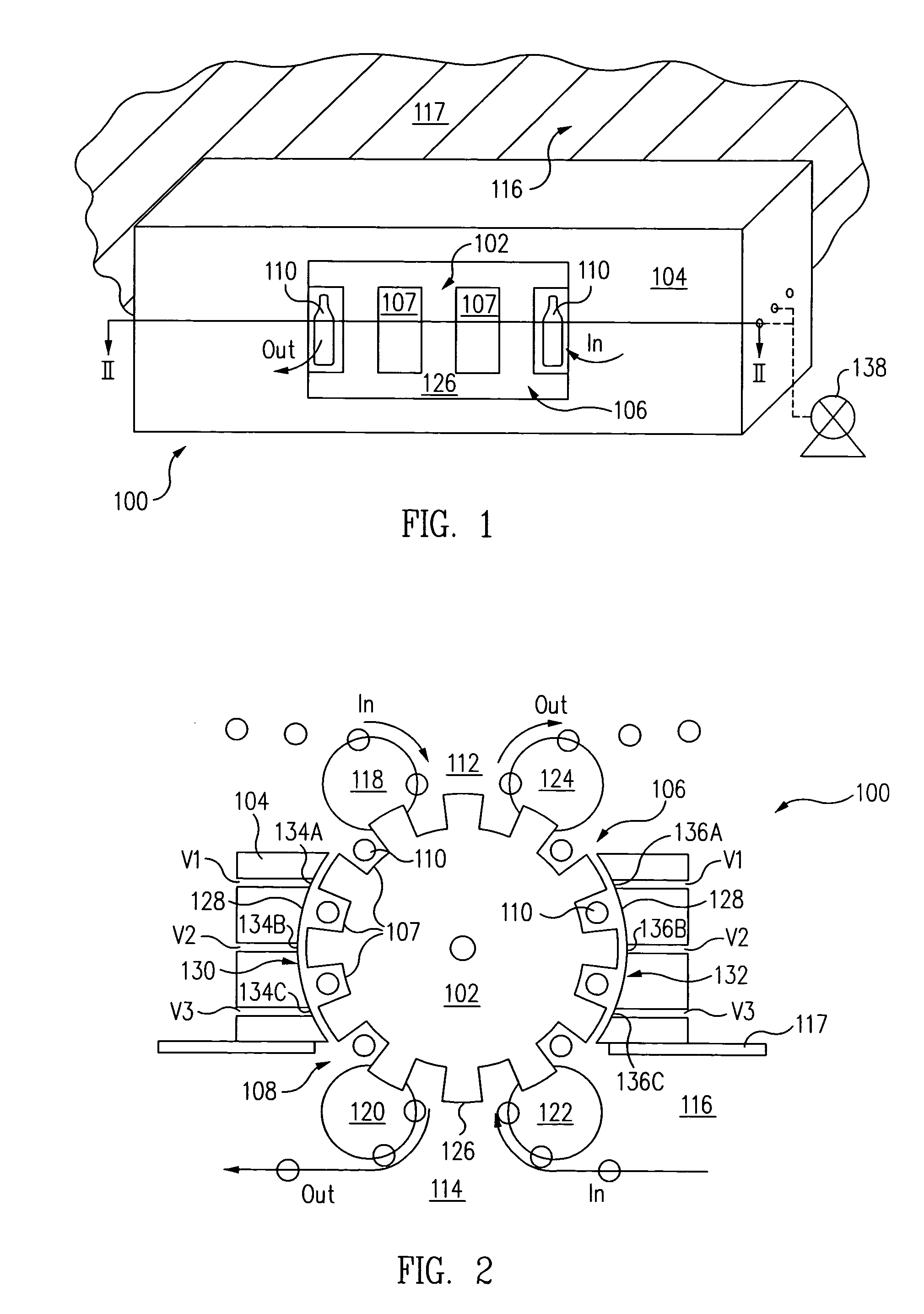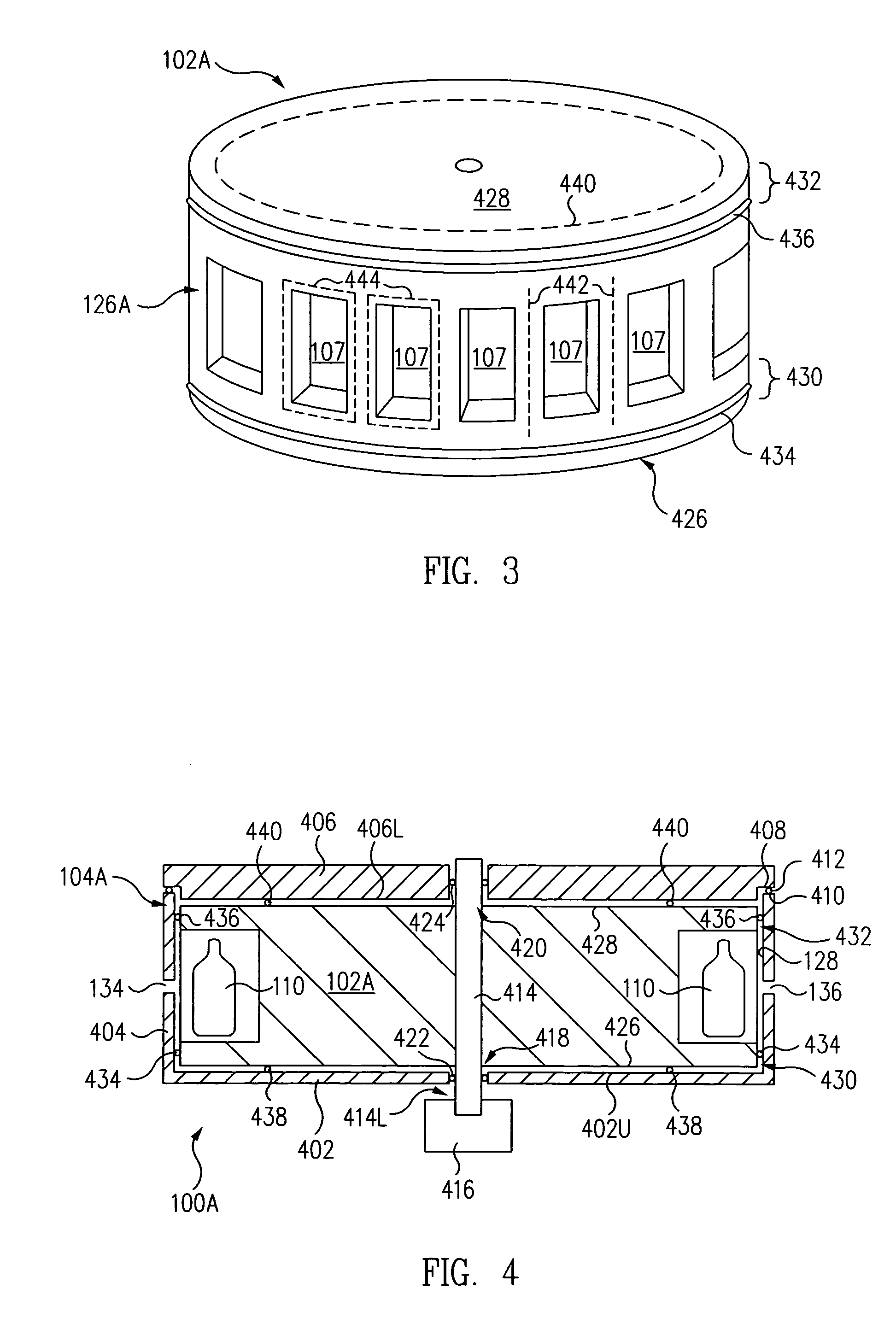Continuous system for depositing films onto plastic bottles and method
a technology of film and plastic bottles, applied in the direction of chemical vapor deposition coating, vacuum evaporation coating, coating, etc., can solve the problems of limited gas supply capacity of pet, high moisture sensitive evoh, and difficulty in finding widespread acceptance, so as to reduce the process cycle time, avoid duplication of costs, and maximize the utilization efficiency of bottle processing equipmen
- Summary
- Abstract
- Description
- Claims
- Application Information
AI Technical Summary
Benefits of technology
Problems solved by technology
Method used
Image
Examples
Embodiment Construction
[0046]FIG. 1 is a perspective view of a rotary bottle vacuum transfer system 100 in accordance with one embodiment of the present invention. FIG. 2 is a cross-sectional view of rotary bottle vacuum transfer system 100 of FIG. 1 along the line II-II in accordance with one embodiment of the present invention.
[0047]Referring now to FIGS. 1 and 2 together, rotary bottle vacuum transfer system 100, sometimes called a rotary delivery mechanism, includes a rotary bottle transfer wheel 102 within a chamber 104. Chamber 104 includes an atmospheric port 106 and a vacuum port 108.
[0048]Bottles 110, e.g., PET bottles, are continuously transferred from an exterior region 112 at atmospheric pressure into rotary bottle vacuum transfer system 100 through atmospheric port 106. Bottles 110 are continuously brought from atmospheric pressure to a sub-atmospheric pressure, e.g., in the range of 1-1000 mTorr (10-100 mTorr in one embodiment), within bottle vacuum transfer system 100. Bottles 110 are conti...
PUM
| Property | Measurement | Unit |
|---|---|---|
| Dielectric polarization enthalpy | aaaaa | aaaaa |
| Pressure | aaaaa | aaaaa |
| Power | aaaaa | aaaaa |
Abstract
Description
Claims
Application Information
 Login to View More
Login to View More - R&D
- Intellectual Property
- Life Sciences
- Materials
- Tech Scout
- Unparalleled Data Quality
- Higher Quality Content
- 60% Fewer Hallucinations
Browse by: Latest US Patents, China's latest patents, Technical Efficacy Thesaurus, Application Domain, Technology Topic, Popular Technical Reports.
© 2025 PatSnap. All rights reserved.Legal|Privacy policy|Modern Slavery Act Transparency Statement|Sitemap|About US| Contact US: help@patsnap.com



